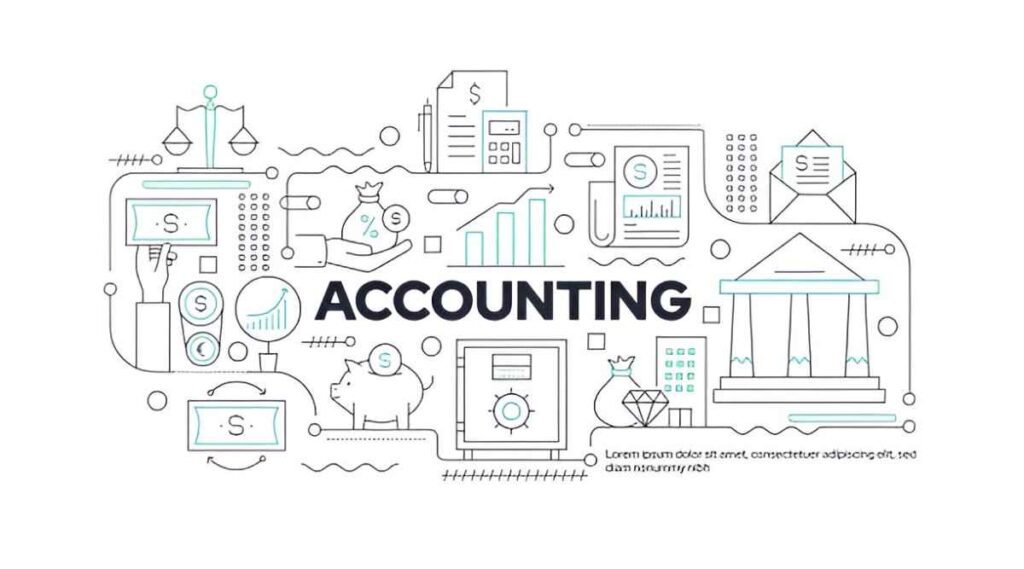Purchasing and supply management (PSM) is the backbone of any successful business. It ensures that organizations acquire the right goods and services at the right time, in the right quantity, and at the right price. As someone who has worked in finance and accounting for years, I’ve seen firsthand how effective PSM can make or break a company’s profitability and operational efficiency. In this article, I’ll dive deep into the essentials of purchasing and supply management, exploring its roles, processes, and real-world examples. I’ll also provide mathematical insights and practical illustrations to help you understand the concepts better.
Table of Contents
What is Purchasing and Supply Management?
Purchasing and supply management refers to the process of sourcing, acquiring, and managing the resources an organization needs to operate. It encompasses everything from identifying suppliers to negotiating contracts and ensuring timely delivery. PSM is not just about buying goods; it’s about creating value for the organization by optimizing costs, improving quality, and mitigating risks.
In the US, where businesses operate in a highly competitive and dynamic environment, PSM plays a critical role in maintaining a company’s competitive edge. For instance, during the COVID-19 pandemic, companies with robust PSM systems were better equipped to handle supply chain disruptions.
The Roles of Purchasing and Supply Management
1. Strategic Sourcing
Strategic sourcing is the process of identifying and selecting suppliers that offer the best value. It involves analyzing market trends, assessing supplier capabilities, and negotiating favorable terms. In my experience, strategic sourcing is not just about finding the cheapest option; it’s about finding the right balance between cost, quality, and reliability.
For example, a manufacturing company might source raw materials from a supplier that offers slightly higher prices but guarantees consistent quality and on-time delivery. This reduces the risk of production delays and ensures customer satisfaction.
2. Supplier Relationship Management
Building strong relationships with suppliers is crucial for long-term success. Supplier relationship management (SRM) involves collaborating with suppliers to improve performance, innovate, and reduce costs. In the US, where businesses often rely on global supply chains, SRM helps mitigate risks such as geopolitical instability and currency fluctuations.
I’ve seen companies use SRM to co-develop new products with suppliers, resulting in faster time-to-market and higher profitability.
3. Cost Management
Cost management is a core function of PSM. It involves analyzing costs, identifying savings opportunities, and implementing cost-reduction strategies. One common approach is total cost of ownership (TCO) analysis, which considers all costs associated with a product or service over its lifecycle.
For example, the TCO of a piece of equipment includes not only the purchase price but also maintenance, operating, and disposal costs. By focusing on TCO, companies can make more informed purchasing decisions.
4. Risk Management
Supply chain risks, such as natural disasters, supplier bankruptcies, and regulatory changes, can have a significant impact on business operations. PSM plays a key role in identifying, assessing, and mitigating these risks.
In the US, where businesses are increasingly exposed to global risks, companies are investing in tools like supply chain mapping and risk assessment software to enhance their resilience.
5. Sustainability and Ethics
Sustainability and ethical sourcing are becoming increasingly important in PSM. Consumers and regulators are demanding greater transparency and accountability in supply chains. In my work, I’ve helped companies implement sustainable sourcing practices, such as sourcing raw materials from certified suppliers and reducing carbon emissions.
Key Processes in Purchasing and Supply Management
1. Demand Planning
Demand planning is the process of forecasting the quantity of goods or services needed to meet customer demand. Accurate demand planning is essential for avoiding stockouts and excess inventory.
For example, a retailer might use historical sales data and market trends to forecast demand for the holiday season. This helps ensure that the right products are available at the right time.
2. Supplier Selection
Supplier selection involves evaluating potential suppliers based on criteria such as price, quality, delivery time, and financial stability. In the US, where businesses have access to a wide range of suppliers, this process can be highly competitive.
I often use a weighted scoring model to evaluate suppliers. For instance, if price is the most important criterion, it might be assigned a weight of 40%, while quality and delivery time are assigned weights of 30% and 20%, respectively. The supplier with the highest overall score is selected.
3. Negotiation and Contracting
Negotiation is a critical skill in PSM. It involves reaching agreements with suppliers on price, terms, and conditions. Effective negotiation can result in significant cost savings and better contract terms.
For example, a company might negotiate a volume discount with a supplier in exchange for a long-term contract. This not only reduces costs but also ensures a stable supply of goods.
4. Order Management
Order management involves placing orders, tracking deliveries, and resolving issues such as delays or quality problems. In the US, where businesses often operate on tight schedules, efficient order management is essential for maintaining customer satisfaction.
5. Performance Monitoring
Performance monitoring involves tracking supplier performance against key metrics such as on-time delivery, quality, and cost. This helps identify areas for improvement and ensures that suppliers meet their obligations.
For example, a company might use a scorecard to evaluate supplier performance. If a supplier consistently fails to meet delivery deadlines, the company might consider switching to a more reliable supplier.
Mathematical Insights into Purchasing and Supply Management
1. Economic Order Quantity (EOQ)
The Economic Order Quantity (EOQ) model is a fundamental tool in PSM. It helps determine the optimal order quantity that minimizes total inventory costs, including ordering and holding costs. The formula for EOQ is:
EOQ = \sqrt{\frac{2DS}{H}}Where:
- D = Annual demand
- S = Ordering cost per order
- H = Holding cost per unit per year
For example, if a company has an annual demand of 10,000 units, an ordering cost of $50 per order, and a holding cost of $2 per unit per year, the EOQ would be:
EOQ = \sqrt{\frac{2 \times 10000 \times 50}{2}} = \sqrt{500000} \approx 707 \text{ units}2. Total Cost of Ownership (TCO)
As mentioned earlier, TCO is a critical concept in PSM. It includes all costs associated with a product or service over its lifecycle. The formula for TCO is:
TCO = P + O + M + DWhere:
- P = Purchase price
- O = Operating costs
- M = Maintenance costs
- D = Disposal costs
For example, if a company purchases a machine for $50,000, with operating costs of $10,000 per year, maintenance costs of $5,000 per year, and disposal costs of $2,000, the TCO over a 5-year period would be:
TCO = 50000 + (10000 \times 5) + (5000 \times 5) + 2000 = 50000 + 50000 + 25000 + 2000 = 1270003. Supplier Performance Scorecard
A supplier performance scorecard is a tool for evaluating supplier performance. It typically includes metrics such as on-time delivery, quality, and cost. Each metric is assigned a weight, and the supplier’s performance is scored on a scale of 1 to 10.
For example, if on-time delivery is assigned a weight of 40%, quality 30%, and cost 30%, and a supplier scores 8, 9, and 7 on these metrics, respectively, the overall score would be:
Overall\ Score = (8 \times 0.4) + (9 \times 0.3) + (7 \times 0.3) = 3.2 + 2.7 + 2.1 = 8.0Real-World Examples of Purchasing and Supply Management
Example 1: Walmart’s Supply Chain Management
Walmart is a prime example of effective PSM. The company uses advanced data analytics to forecast demand, optimize inventory levels, and negotiate favorable terms with suppliers. Walmart’s supply chain is so efficient that it can restock shelves within hours, ensuring that customers always find what they need.
Example 2: Apple’s Supplier Relationships
Apple has built strong relationships with its suppliers, enabling it to innovate and bring new products to market quickly. Apple works closely with suppliers to ensure high-quality components and ethical sourcing practices. This has helped Apple maintain its position as a leader in the tech industry.
Example 3: Tesla’s Vertical Integration
Tesla has taken a different approach to PSM by vertically integrating its supply chain. The company manufactures many of its components in-house, reducing its reliance on external suppliers. This gives Tesla greater control over quality and costs, but it also increases the complexity of its operations.
Conclusion
Purchasing and supply management is a complex but essential function that drives business success. By understanding the roles, processes, and mathematical principles behind PSM, companies can optimize their operations, reduce costs, and mitigate risks. In the US, where businesses face unique challenges and opportunities, effective PSM is more important than ever.





